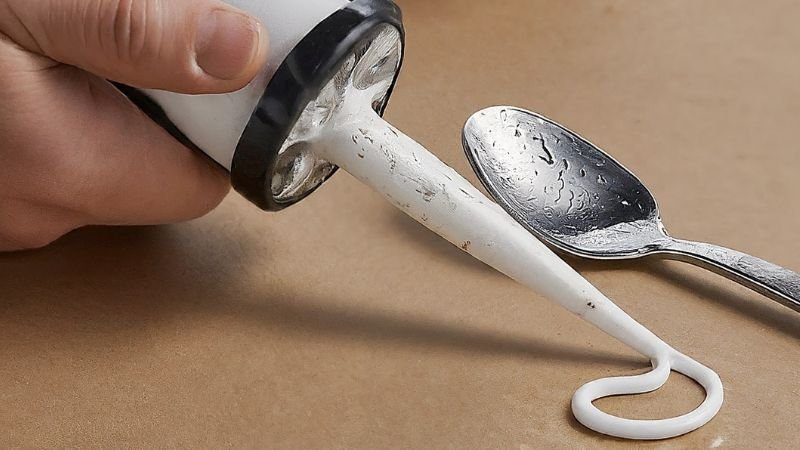Working with silicone can be a time-consuming process, particularly when waiting for it to cure. Whether you’re dealing with sealants, molds, or adhesives, finding ways to expedite the curing process can significantly enhance efficiency and productivity. Understanding the techniques and factors that can speed up silicone curing is crucial for anyone working with this versatile material.
To speed up silicone curing, you can use a few key methods. Increasing temperature, improving ventilation, and using catalysts or accelerators are effective ways to shorten the curing time. Each method has its own advantages and considerations, depending on the specific type of silicone and application. By implementing these strategies, you can significantly reduce curing times and improve your workflow.
Accelerating the curing process without compromising the quality of the silicone is essential. Let’s explore these methods in detail.
How Does Temperature Affect Silicone Curing?
Temperature is one of the most critical factors influencing silicone curing time. Higher temperatures can accelerate the chemical reactions involved in curing, leading to faster results.
Using Heat to Speed Up Curing
- Warm Environments: Place the silicone in a warm environment. An increase in ambient temperature can significantly reduce curing time.
- Heat Lamps: Using heat lamps or infrared heaters can provide direct warmth to the silicone, further accelerating the process.
- Oven Curing: For heat-resistant silicone, curing in an oven at a controlled temperature can be very effective. Ensure the temperature is appropriate for the specific silicone being used.
Studies show that increasing the curing temperature can reduce the curing time of silicone by up to 50%.
Does Humidity Influence Silicone Curing?
Humidity also plays a role in the curing process, particularly for certain types of silicone that cure by absorbing moisture from the air.
Controlling Humidity Levels
- High Humidity: For moisture-cure silicone, increasing the humidity can speed up curing. Use a humidifier in the work area to elevate humidity levels.
- Steam: Introducing steam can rapidly increase humidity around the silicone, hastening the curing process.
What Are Catalysts and Accelerators?
Catalysts and accelerators are chemical agents that can be added to silicone to speed up the curing process. These additives are particularly useful when working with large batches or in time-sensitive projects.
Types of Catalysts and Accelerators
- Platinum Catalysts: Commonly used in addition-cure silicone, platinum catalysts can greatly reduce curing time.
- Tin Catalysts: Used in condensation-cure silicone, tin catalysts are effective for speeding up the curing process.
Industry experts recommend using catalysts to enhance the curing speed of silicone, ensuring faster turnaround times .

How Does Mixing Technique Impact Curing?
The way silicone components are mixed can affect the curing time. Proper mixing ensures that the curing agents are evenly distributed, which can lead to faster and more consistent curing.
Best Practices for Mixing
- Thorough Mixing: Ensure that the silicone and curing agent are mixed thoroughly to achieve a uniform consistency.
- Mechanical Mixers: Using mechanical mixers can help achieve a more consistent mix, reducing the likelihood of uneven curing.
- Mixing Ratios: Adhering to the recommended mixing ratios is crucial for optimal curing performance.
Can Improved Ventilation Speed Up Curing?
Good ventilation can help in the evaporation of solvents and accelerate the curing process for certain types of silicone.
Enhancing Airflow
- Fans: Use fans to increase airflow around the curing silicone. This helps in the evaporation process and speeds up curing.
- Ventilation Systems: Implementing a robust ventilation system in your workspace can improve air circulation and reduce curing times.
Are There Specialized Products to Speed Up Curing?
Several specialized products are designed to accelerate the silicone curing process. These include fast-curing silicones and additives specifically formulated to reduce curing time.
Fast-Curing Silicones
- Pre-Mixed Solutions: Some manufacturers offer pre-mixed silicone solutions that cure faster than standard products.
- High-Performance Formulas: High-performance silicone formulations often include additives that speed up the curing process.
Additives and Sprays
- Curing Accelerators: Additives that can be mixed with silicone to shorten curing time.
- Surface Sprays: Sprays that can be applied to the surface of the silicone to accelerate the curing process.
What Are the Potential Risks of Speeding Up Curing?
While speeding up the curing process can be beneficial, it’s essential to be aware of potential risks and drawbacks. Overheating, improper mixing, and excessive use of accelerators can lead to compromised silicone quality.
Mitigating Risks
- Temperature Control: Avoid overheating, which can cause silicone to degrade or cure unevenly.
- Proper Ratios: Ensure that catalysts and accelerators are used in the recommended proportions to prevent issues with silicone integrity.
- Monitor Conditions: Regularly monitor temperature, humidity, and airflow to maintain optimal curing conditions.
More Questions About Silicone Curing?
How Long Does Silicone Typically Take to Cure?
Standard curing times for silicone can range from a few hours to several days, depending on the type and conditions.
Can I Use a Hair Dryer to Speed Up Curing?
A hair dryer can be used for small areas, but it’s important to avoid overheating and ensure even application.
Is There a Limit to How Much I Can Speed Up Curing?
Yes, speeding up the curing process too much can compromise the quality of the silicone. It’s essential to balance speed with maintaining the material’s properties.
Conclusion
Speeding up the silicone curing process can be achieved through various methods, including increasing temperature, controlling humidity, using catalysts, improving ventilation, and utilizing specialized products. While these techniques can significantly reduce curing times, it’s crucial to maintain proper conditions to ensure the quality and integrity of the silicone. By following these guidelines, you can enhance efficiency and productivity in your silicone projects.
Implementing these strategies effectively balances speed and quality, ensuring optimal results in silicone curing.